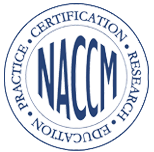The Most Common Types of Skin Cancer in Seniors
Skin cancer is the most common cancer in the United States, with millions of cases diagnosed each year. With years of sun exposure and often weakened immune systems, seniors are particularly vulnerable to this disease. That’s why skin cancer awareness is crucial for seniors and their caregivers.
Detecting skin cancer early can greatly improve the chances of successful treatment, and awareness of the types of skin cancer can help seniors and their caregivers identify potential warning signs. This blog post will take a look at the three most common types of skin cancer that seniors should watch out for, including their causes, symptoms, and treatment options.
What is Skin Cancer?
In general, skin cancer refers to any abnormal growth of skin cells, most commonly caused by excessive exposure to UV light from the sun or tanning beds. Genetic factors and a weakened immune system can also lead to a greater risk of skin cancer.
Some of the most significant signs of skin cancer include:
- Unusual moles or sores that do not heal
- Changes in existing moles, such as size, shape, or color
- Itching and tenderness around a mole
If a senior or their caregiver notices any of these signs, it’s essential to see a doctor for diagnosis and treatment as soon as possible.
Common Types of Skin Cancers in Seniors
Recognizing the different types of skin cancer is vital for caregivers to help seniors detect and treat skin cancer in its early stages. This section provides an overview of the three most common types of skin cancers in seniors.
Basal Cell Carcinoma
Basal cell carcinoma (BCC) is the most common type of skin cancer in seniors and one of the easiest to treat. It is a slow-growing cancer that typically develops on sun-exposed areas of the body. This type of cancer usually appears as a small, flesh-colored bump or patch on the face, neck, and hands. It can also look like sores that don’t heal.
The most significant risk factors for developing BCC are prolonged exposure to ultraviolet (UV) light, fair skin, and a weakened immune system. Seniors should take extra precautions to protect their skin from UV light and be on the lookout for any changes in the appearance of their skin.
Basal cell carcinoma can be easily treated with minimal scarring, but it can cause serious damage if left untreated. Treatment options include topical ointment, creams or gels, cryosurgery (freezing the cancer cells), laser treatments, and surgery.
Squamous Cell Carcinoma
Squamous cell carcinoma (SCC) is the second most common type of skin cancer in seniors. It usually appears as a scaly red patch on the face, neck, and hands. It can also look like an open sore that bleeds easily or a wart-like growth.
SCC is usually not life-threatening, but it is still vital to seek treatment as soon as possible. Risk factors for this type of skin cancer include prolonged exposure to UV light, fair skin, a weakened immune system, and pre-existing skin diseases. Seniors should be aware of their risk factors and keep an eye out for any changes in their skin.
Thankfully, many treatment options are available to treat squamous cell carcinoma, including surgery, radiation therapy, and topical medications. Seniors should speak with a doctor about the best option for their needs.
Melanoma
Finally, melanoma is the most dangerous form of skin cancer. It usually appears as a dark mole on the face, neck, or hands. This type of cancer is especially dangerous because it can spread quickly to other parts of the body if left untreated.
The most significant risk factors for melanoma in seniors are prolonged exposure to UV light, fair skin, weakened immune system, and pre-existing skin diseases. Seniors must take extra precautions when spending time in the sun and get regular skin checks.
Fortunately, many treatment options are available for melanoma, from surgery to radiation therapy and chemotherapy. With early intervention and treatment, seniors can reduce the risk of developing more severe complications from any type of skin cancer.
The Importance of Prevention and Early Detection
To prevent skin cancer, seniors should take extra precautions, such as wearing protective clothing and sunscreen, when spending time in the sun. Regular self-examination and scheduling regular skin cancer screenings with a healthcare provider are also essential steps for prevention.
Early detection and treatment can increase the chances of a successful outcome and help prevent the spread of cancerous cells. That’s why it’s so important for seniors to seek immediate medical attention if they notice any changes in the appearance of their skin. With proper care and attention, seniors can stay healthy and protect their skin against cancer for years to come.
How a Care Manager Can Help
Skin cancer is a serious condition that should not be taken lightly. Dealing with skin cancer can be overwhelming for seniors and their families, but a care manager can provide invaluable support throughout the process. From coordinating medical appointments to providing emotional support and education, a care manager can help seniors and their families navigate the complexities of skin cancer treatment.
Reflections Management and Care offers various senior care management services to help your loved ones stay safe and healthy. Our team provides personalized care plans tailored to each client’s individual needs. Get in touch with us today to find out more about our services and to determine if Reflections Management and Care is the right fit for your family’s needs.














